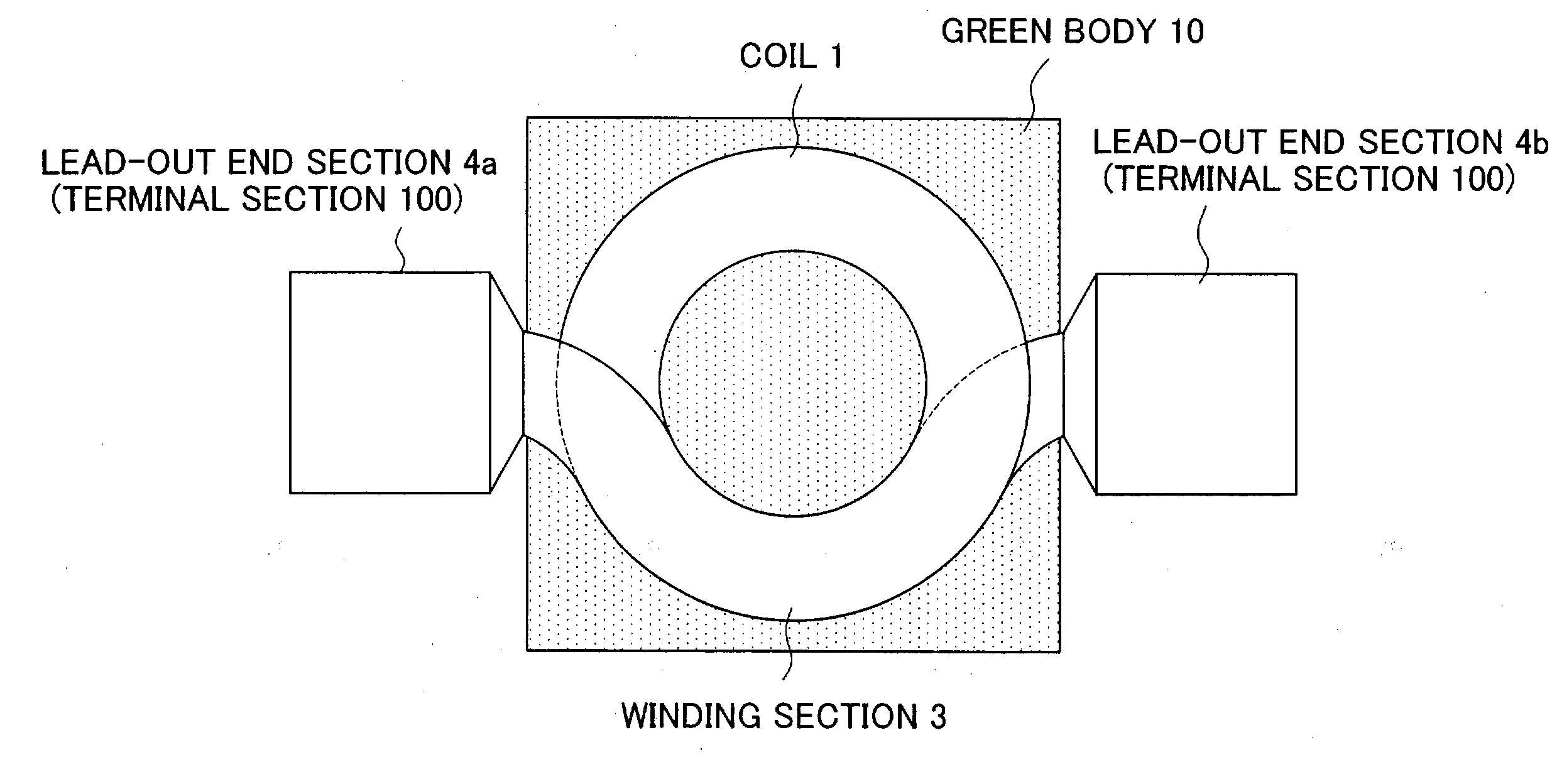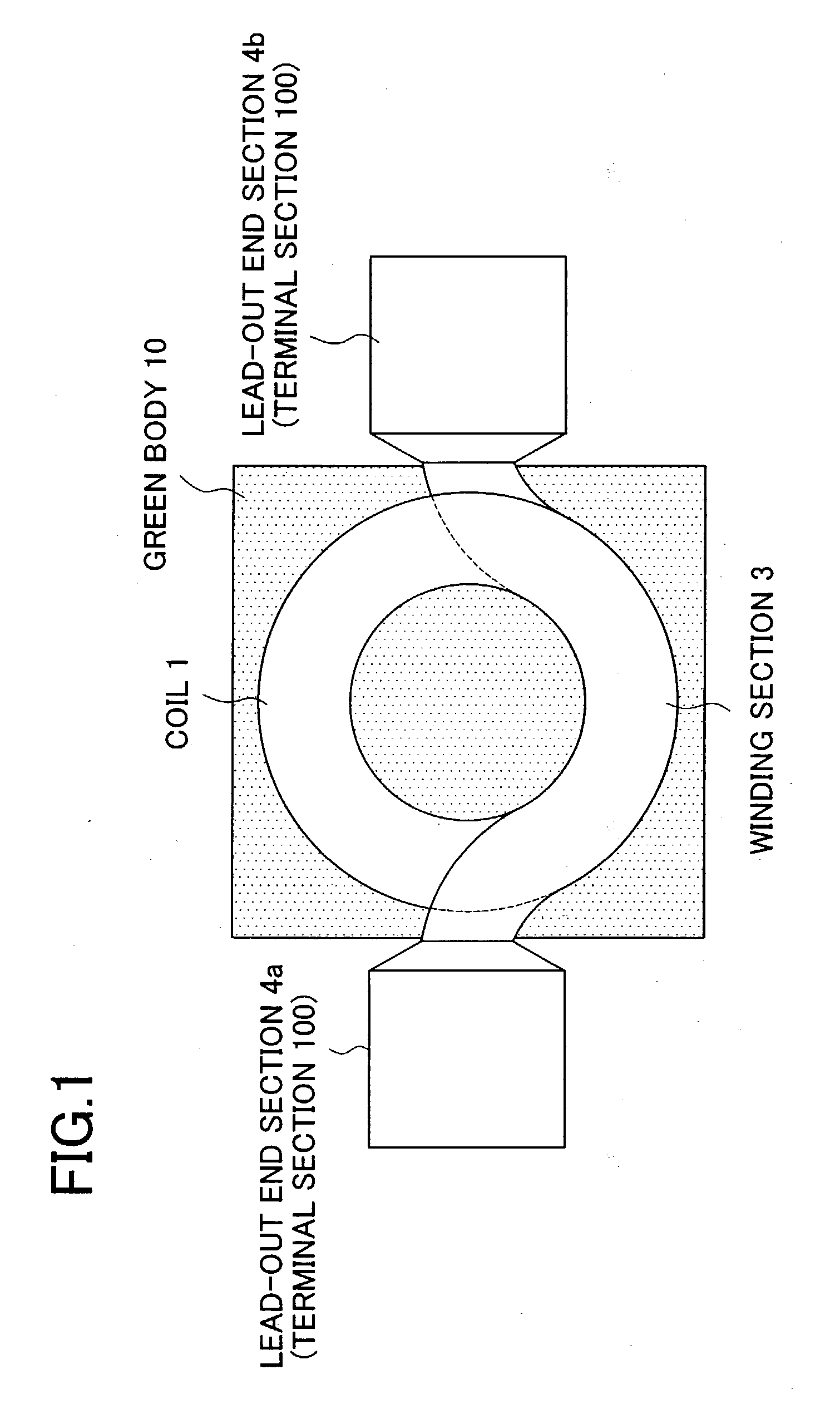Coil-embedded dust core and method for manufacturing the same, and coil and method for manufacturing the same
a technology of dust core and coil, which is applied in the direction of transformer/inductance coil/winding/connection, inductance with magnetic core, inductance, etc., can solve the problems of joint failure, prone to failure during compression, and no consideration of connection parts between
- Summary
- Abstract
- Description
- Claims
- Application Information
AI Technical Summary
Benefits of technology
Problems solved by technology
Method used
Image
Examples
Embodiment Construction
[0106] The coil-embedded dust core in accordance with the present invention will be described in detail by using an example.
[0107] An experiment conducted to ascertain the inductance value of the coil-embedded dust core in the case where the coil 1 in which the lead-out end sections 4a and 4b are formed on the same plane by bending and the coil 200 in which the lead-out end sections 4a and 4b are not formed on the same plane are used is explained as the example. Both of the coil 1 and the coil 200 are formed by winding the conductor 2 2.5 turns.
[0108] Twenty samples of the coil-embedded dust core were made according to the following procedure:
[0109] The following were prepared:
[0110] Magnetic powder: Permalloy powder manufactured through atomizing method (45% Ni--Fe; mean particle size 25 .mu.m)
[0111] Insulating material: silicone resin (SR2414LV by Toray Dow Corning Silicone Co., Ltd.)
[0112] Cross-linking agent: organic titanate (TBT B-4 by NIPPON SODA CO., LTD.)
[0113] Lubricant: a...
PUM
 Login to View More
Login to View More Abstract
Description
Claims
Application Information
 Login to View More
Login to View More - R&D
- Intellectual Property
- Life Sciences
- Materials
- Tech Scout
- Unparalleled Data Quality
- Higher Quality Content
- 60% Fewer Hallucinations
Browse by: Latest US Patents, China's latest patents, Technical Efficacy Thesaurus, Application Domain, Technology Topic, Popular Technical Reports.
© 2025 PatSnap. All rights reserved.Legal|Privacy policy|Modern Slavery Act Transparency Statement|Sitemap|About US| Contact US: help@patsnap.com



